Technological innovation presents new challenges in any industry and advances in artificial intelligence and content marketing are no different.
Self-teaching algorithms have made search engine optimization (SEO) more abstract and difficult to master, which means it can feel harder to rank, attract an audience, and ultimately, gain customers with content marketing.
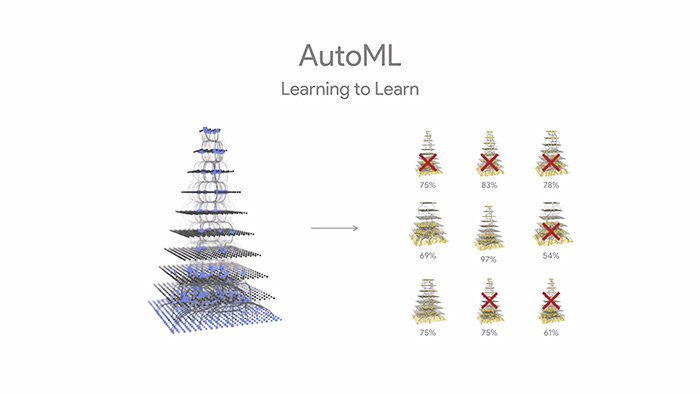
However, while innovation brings challenges, it also brings great opportunities for those ready to evolve and learn how to harness the new technology.
I’m going to show you how artificial intelligence (AI) will shape the future of content marketing to make it even more effective as well as some ways it should already be shaping your strategy today.
But first, you need to understand how artificial intelligence is shaping the new SEO landscape…
1. Search engines are developing minds of their own
For decades, Google (and its competitors) based its ranking on rule-based logic. Granted, it was very complex rule-based logic, but nevertheless, at the end of the day, it was hard-coded rules. This meant an SEO expert’s primary job was to find and exploit the rules.
There were keyword hacks, then backlinking hacks, and so on, but not all these exploits were bad.
For example, if you can create content that generates a lot of legitimate, authoritative backlinks, you’re probably creating valuable content readers want to see.
That’s why for years, Matt Cutts was Google’s key SEO spokesperson.
Between his online videos and public speaking engagements, Matt would explain how Google’s algorithm and updates worked for marketers so that they could create websites and content that lined up with the way the search engine wanted it.
But in the early 2010s that started to slow down and in 2014, he took leave from Google.
The SEO world was shocked and worried. Who would explain all this complicated black magic to us? Then it got worse. In 2015, Google announced his replacement wouldn’t be a public persona.
This was the beginning of the end of an era of (moderate) transparency from the search king.
They still make major announcements, like the switch to mobile-first indexing, but otherwise, they’re pretty tight-lipped about their algorithm updates now (which happen about 3 times every day).
To be fair, some insiders at Google have even admitted they aren’t entirely sure what RankBrain (a key element in its algorithm) is doing to generate results anymore, which means that SEO has become even more of an art than a science.
And Google isn't the only one. Since 2013, organic reach on Facebook Pages has been plummeting as well.
Way back in 2014, Ogilvy warned major brands that they should expect this metric to trend toward zero:
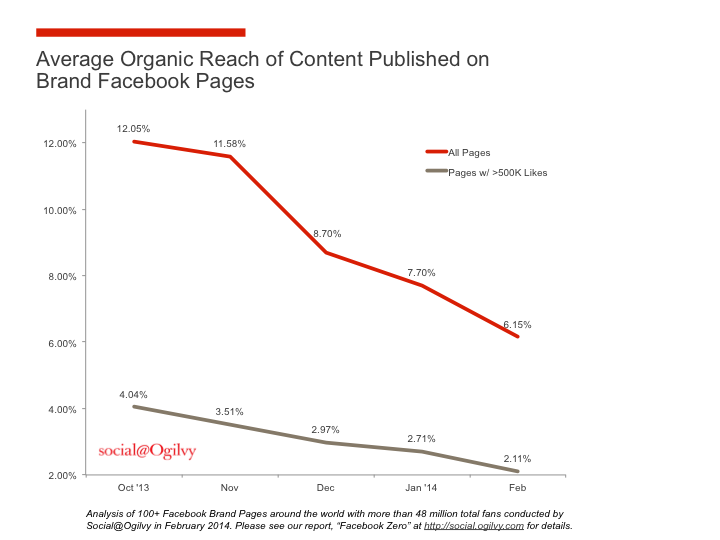
But very few heeded this warning until it became a reality.
While it’s made our jobs a bit harder, this is actually a golden opportunity for marketers.
The aim of all these investments in artificial intelligence and machine learning is ultimately to provide a better user experience and make happier customers.
As marketers, don’t we want the same thing?
As these platforms become more effective, you can expect the results they drive to match. Features like private (formerly “personal”) search results will drive more qualified traffic to the right places:

Instead of creating content with mass appeal for the sake of better search ranking, you’ll be able to create content that speaks directly to your audience – meaning more qualified traffic.
Now, let’s take a look at how AI is being used to create better content, develop better strategy, and leverage dynamic hyper-personalization (and where it’s going next).
2. AI will create better content
Based on a survey of more than 350 AI experts last year, researchers believe AI will be able to write a passable high school essay as soon as 2026 and a New York Times bestseller by 2049.
The Associated Press has even been publishing thousands of pieces of completely automated stories since 2015.
If you're skeptical that computers can’t really write effective content that plays to the reader’s emotions, you’d be right. We’re not quite there yet. The best content is still written, at least in part, by humans.
But AI-assisted content creation is very powerful and very real.
Content tools capitalizing on AI
You might not realize it, but many of the tools you’re using are already built on fundamental AI technology like Machine Learning or Natural Language Processing (NLP).
I use Grammarly, for example, on every piece I write to help catch more obscure homophones (two words that sound the same but have different meanings and spelling, like "knew" and "new") and language conventions my spell checker won’t (and editors don’t want to deal with.)

Furthermore, companies like CoSchedule have created tools that analyze and break down your headlines to provide actionable insights that will increase your click-through rate:
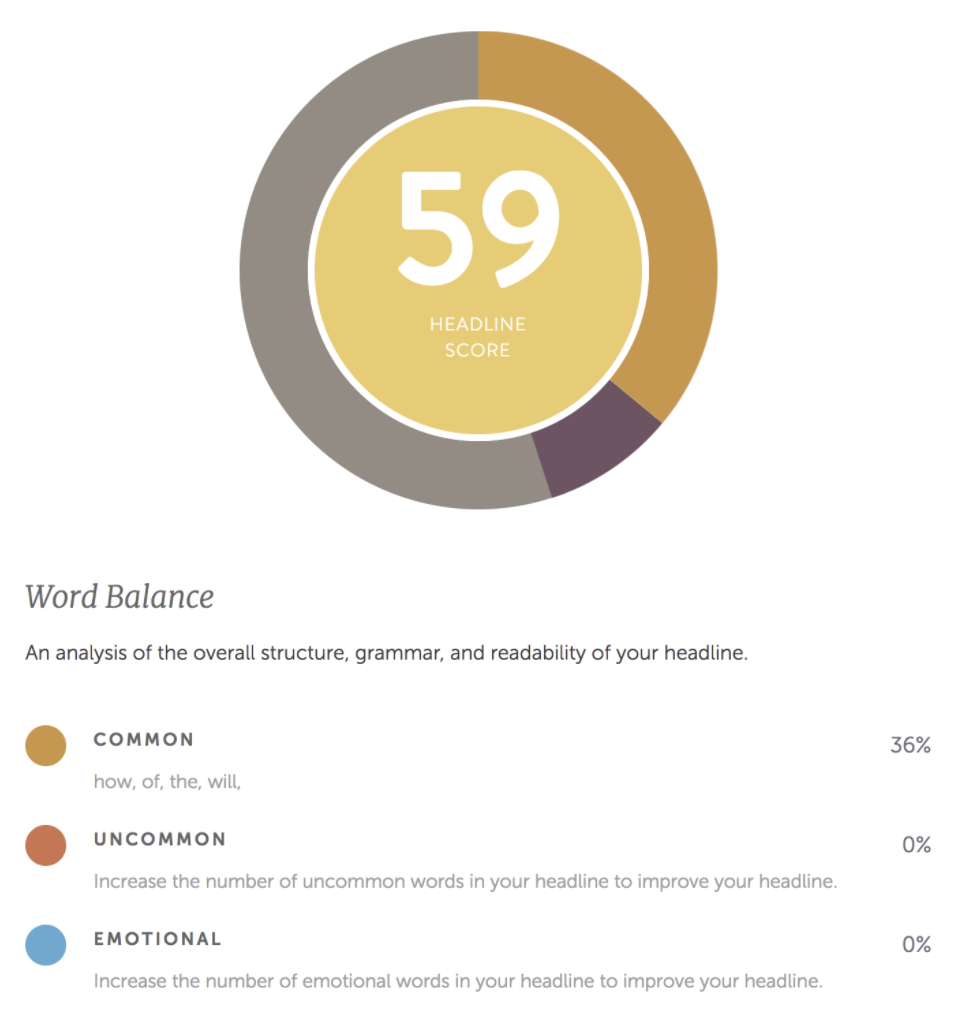
One of my favorite AI tools for content marketing is Clearscope.
Clearscope analyzes the top 30 results on Google for any keyword you enter and then gives you data (like that below) and actionable advice on how to write content that can compete with them:
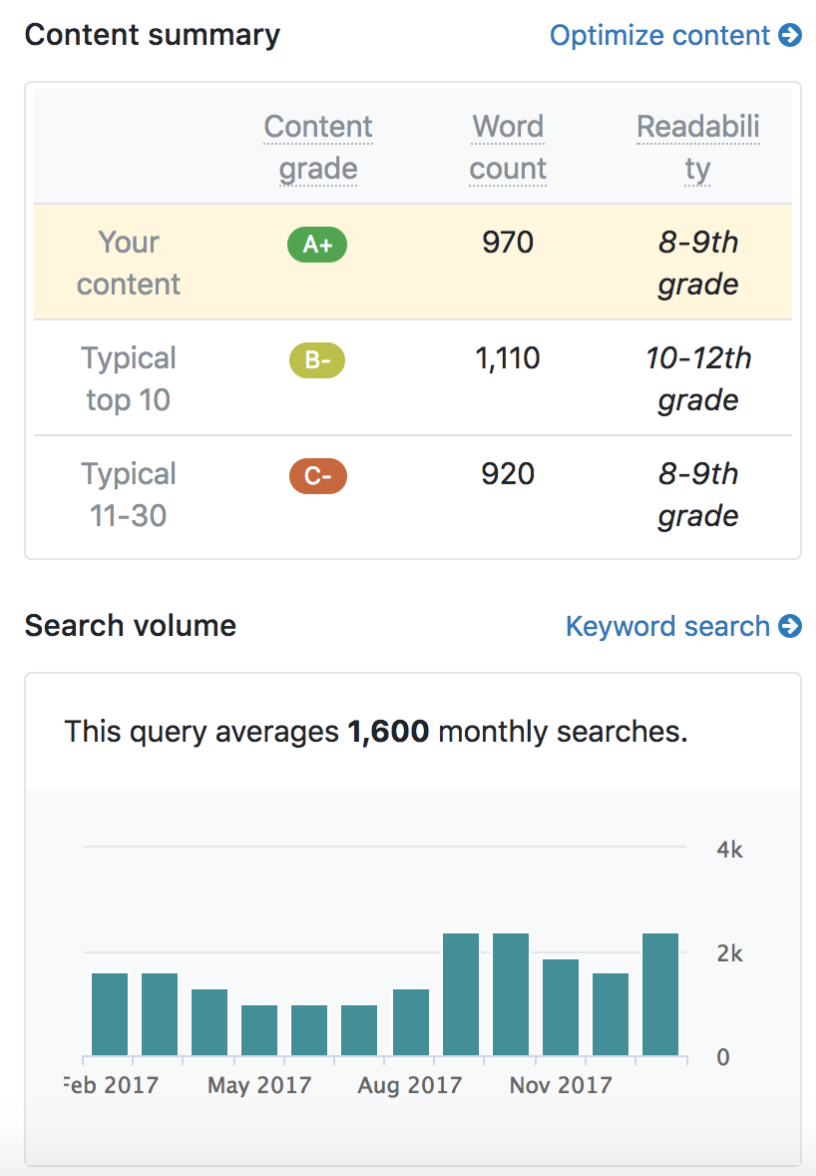
Part of the way it does this is by analyzing other common keywords that appear in those articles so that you can work them into your piece naturally:
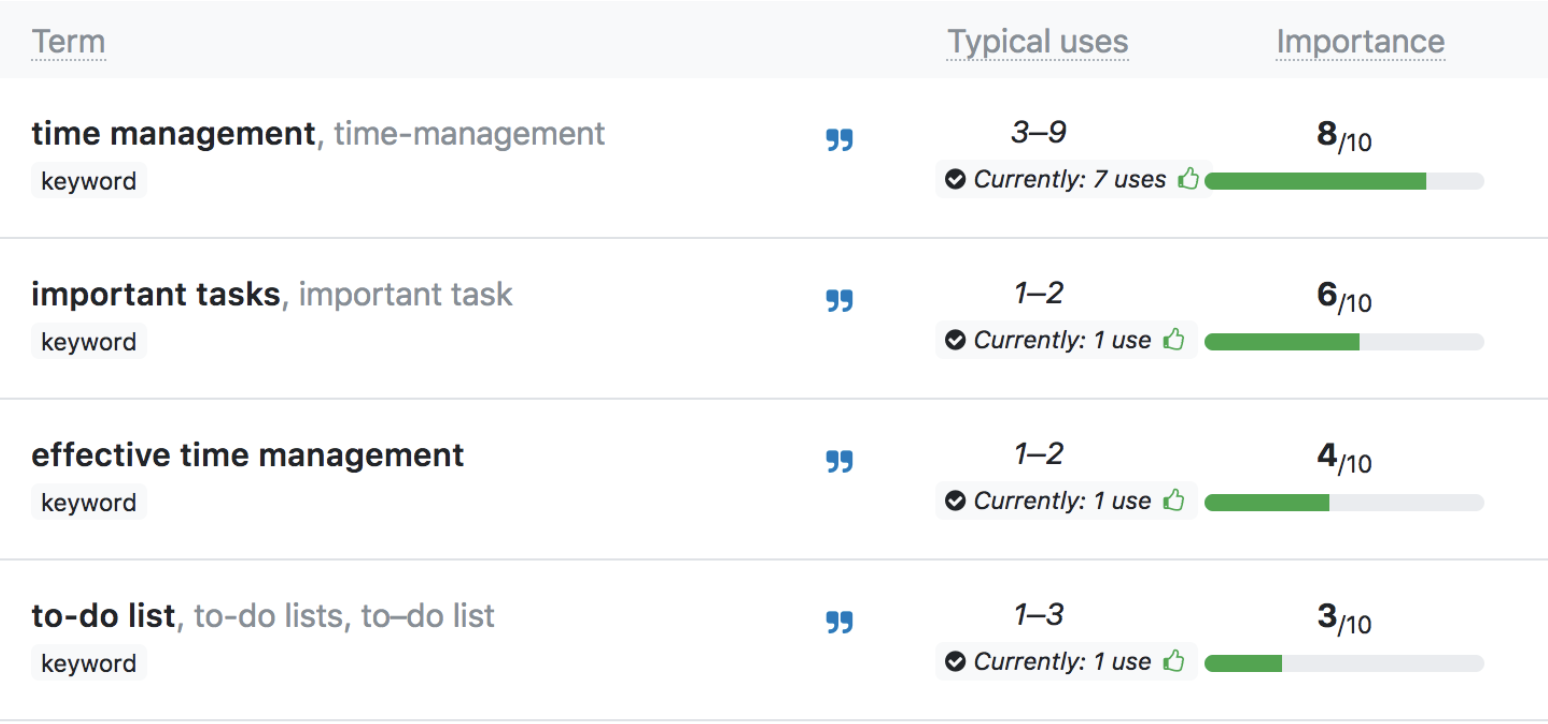
This is critical because Google’s algorithm is now much more focused on search intent, not exact keyword match. This means keyword stuffing is less effective and quality, well-written content is more likely to rise to the surface.In fact, you can even rank for keywords that aren’t found in your article if you satisfy the intent of that query.
All of this is possible because of advances in AI technology like machine learning and NLP, and it’s power doesn’t stop at the tactical level.
3. AI can optimize your content strategy
One of the biggest challenges of content marketing is answering critical questions like:
- “What type of content do my customers really want?”
- “How do I move customers from one stage to the next?"
The traditional strategy is to research and develop buyer personas, but artificial intelligence promises to answer these questions better than ever before without all the planning.
By analyzing website traffic, email interactions, and social media behavior, AI helps you develop a more detailed profile of your target audience and what they like.
One popular brand that uses this technology already is Fender Guitar, which works with Crimson Hexagon to provide AI-powered customer insights.
After analyzing its current audience, Fender found that it skewed heavily toward men, explaining why they were having a trouble connecting with female customers.
The traditional solution would be to having a big meeting, create customer profiles, and make assumptions about what female guitarists wanted. If the marketing team decided to invest a little more, they could even interview some female guitarists and ask them directly what would want, but unless they interviewed thousands, they'd have to hope the few women they questioned represented the diverse national market.
Plus, people are notoriously bad at explaining why they make decisions.
Fortunately, using Crimson Hexagon, Fender Guitar was able to skip past these sloppy techniques that rely on assumptions, self-reporting, and hope.
AI-powered customer insights from Crimson Hexagon allowed Fender Guitar to create a more targeted approach based on content that was designed to attract the female demographic.
For example, they found that bassist Nik West was popular among their target female audience. So, when they found this video of her jamming out on a Fender guitar, they paid a little bit of money to boost it on Facebook so that more potential customers would see it.
When that brand image marketing seemed to work, they expanded their relationship with the artist and started creating more promotional material by having her sample and showcase their products:
4. AI will improve attribution analysis
Another problem for content marketers is measuring the impact of content further up the funnel. In other words, determining which content is actually leading to closed customers.
Most conversion reporting is done on a last-touch basis, which gives all the credit for a conversion to the most recent click or source of that traffic.
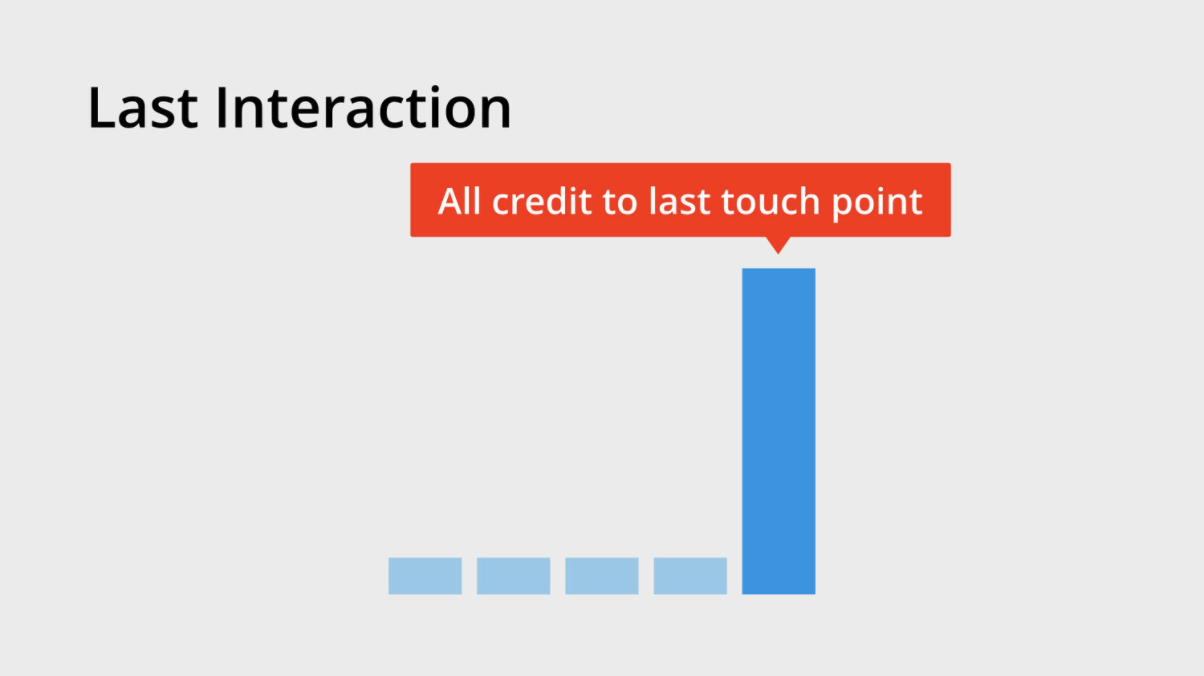
But most customer’s journey’s aren’t so simple. Customers need to interact with your brand more than once before they are ready to buy:
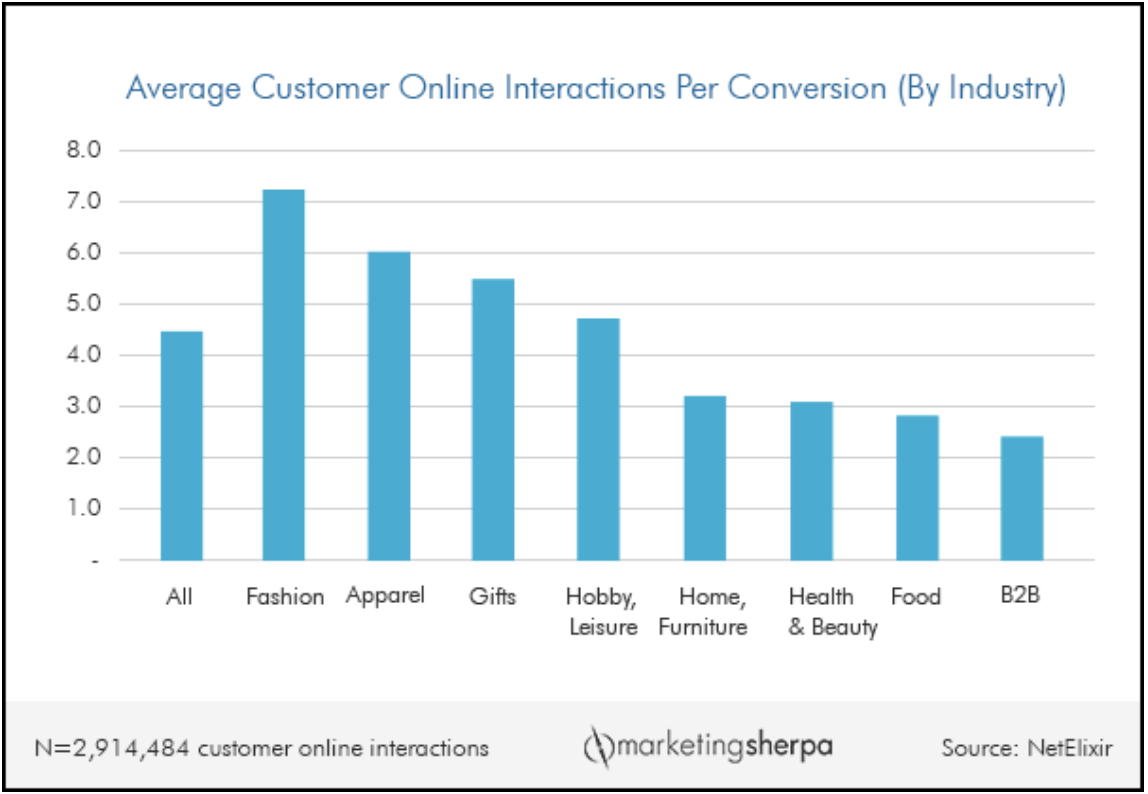
In fact, 47% of consumers interact with three to five pieces of content before taking a next step. For instance, fashion and apparel consumers often read more than seven pieces of content — perhaps from influencers and fashion blogs — before taking the step of purchasing. In this case, the last attribution model isn’t reflective of what’s really happening because the relationship has been nurtured over multiple steps.
An effective content strategy is designed by developing pieces around questions customers
will be asking as they move through different stages of the marketing funnel:
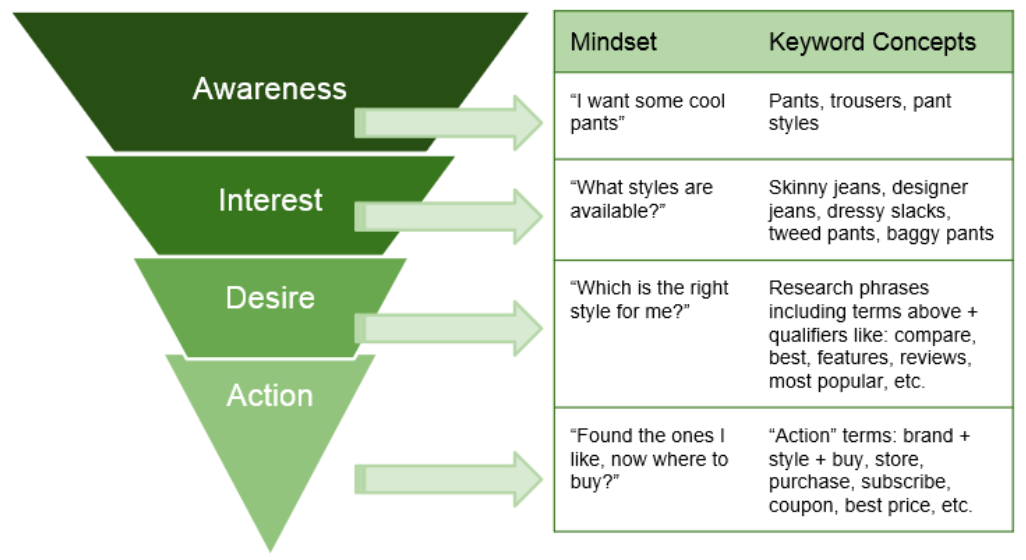
We can more clearly represent how consumers go through the purchase cycle by using more sophisticated attribution models like the one below:
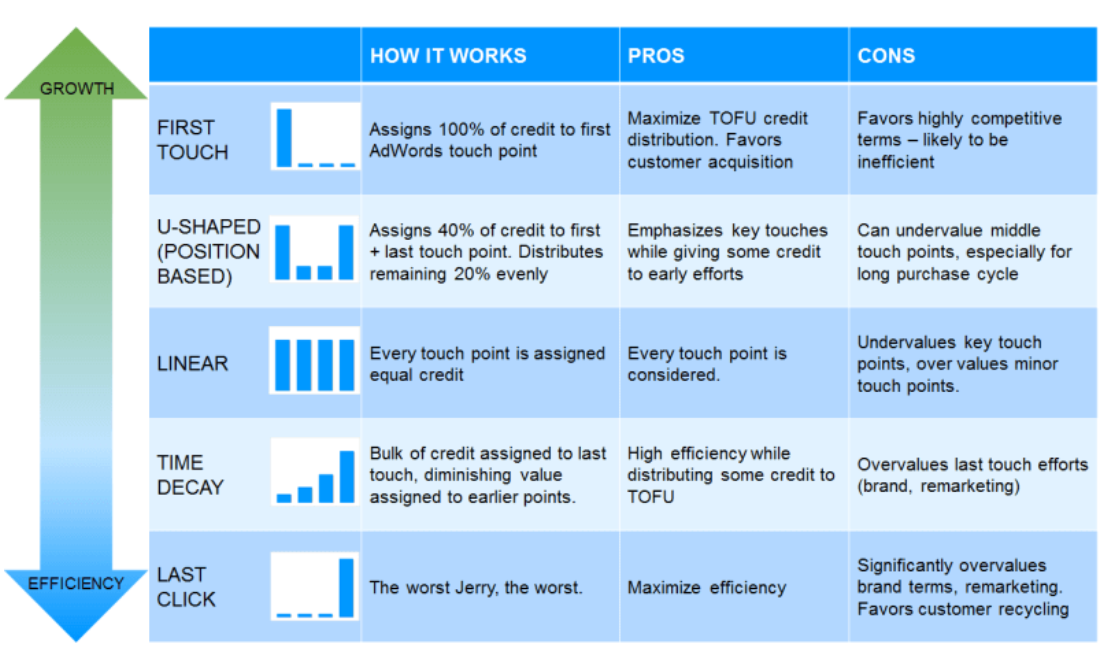
However, there is still significant room for improvement.
The last click attribution model only measures a small piece of the actual consumer journey, rather than following results from the first piece of content consumed to the actual purchase.
It’s crucial to know what content and ads work (and which don’t) in each step of the journey in order to duplicate and scale effective campaigns.
Tools like Google Attribution — and even HubSpot — are addressing the problem by connecting all your channels into one unified data set.
At the same time, companies like Demand Jump are taking this even further by developing algorithmic attribution models that analyze customer behavior to determine what content is driving them through each phase and eventually conversion.
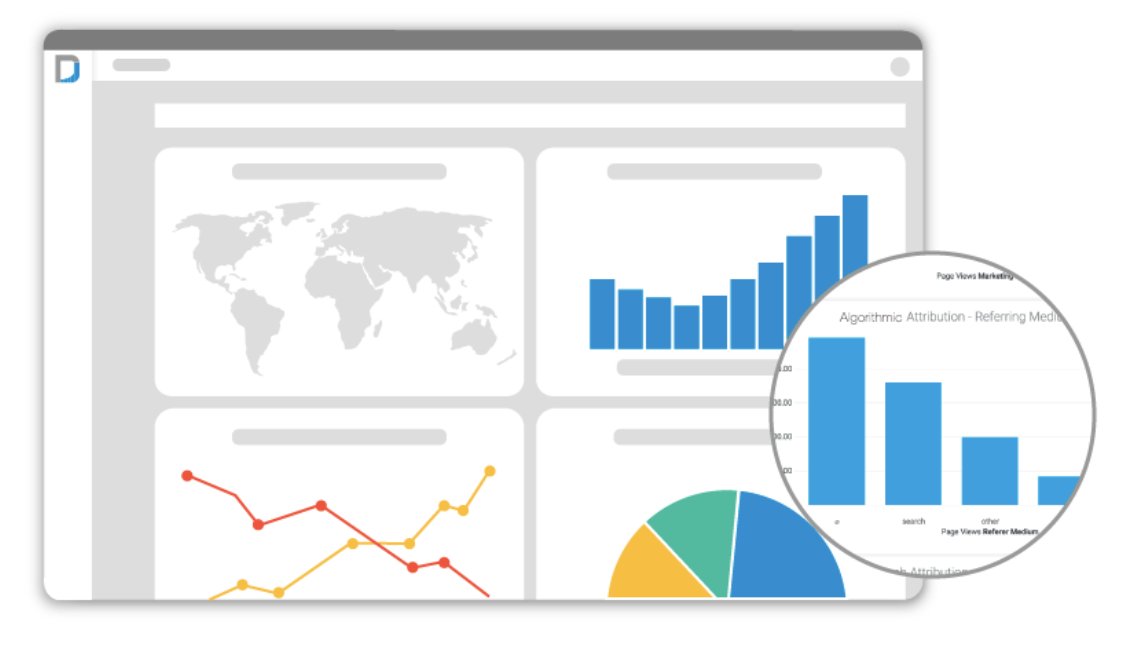
5. AI will bring dynamic hyper-personalization
With Google's and Facebook’s algorithms leaning heavier toward targeted content that is highly relevant to the user, marketers need to up their efforts to deliver hyper-personalized content and recommendations.
With AI, you can have a better understanding of your audience and prescriptive attribution and, in turn, know what content moves customers from one phase to the next.
In fact, marketers ranked targeted content delivery the most substantial impact that AI will have on marketing.
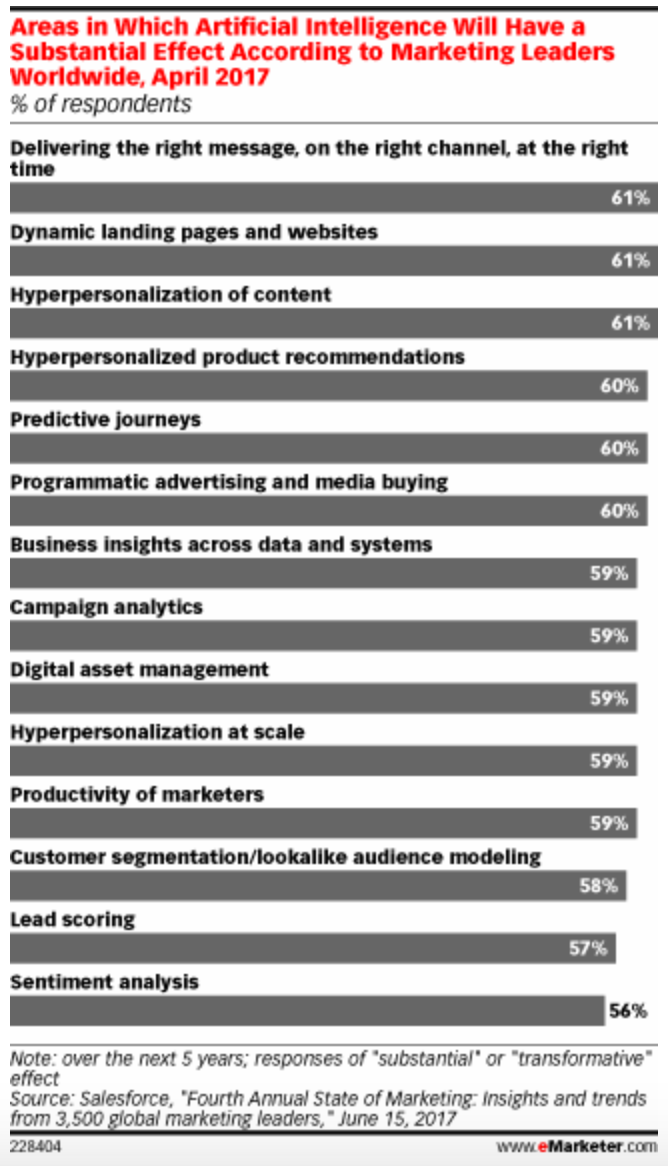
Nurturing and upselling
For instance, you can use this information to offer more relevant content upgrades and recommendations like Single Grain does with the example below:
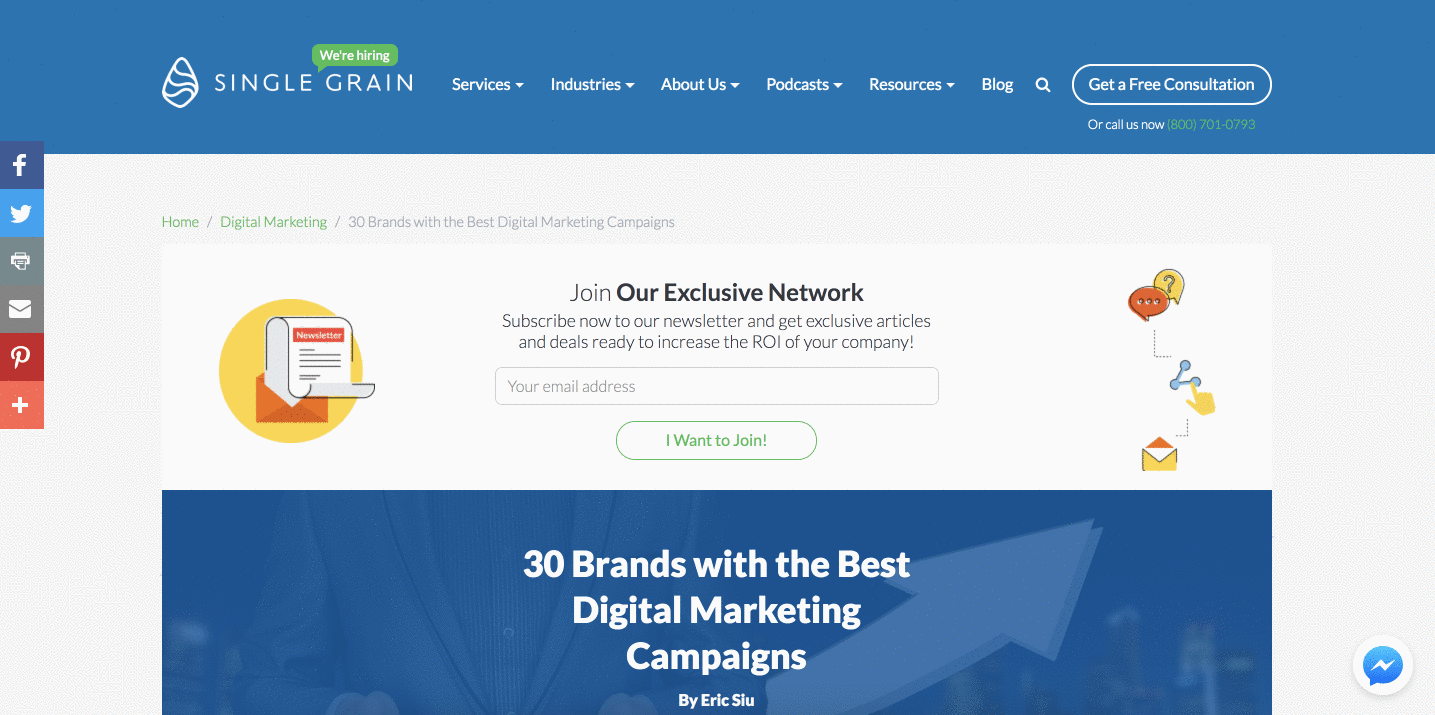
Dynamic landing pages
Closely linked to optimized content delivery are “dynamic landing pages and websites” and “hyper-personalization of content.”
Based on segmentation data, dynamic landing pages follow the same principles as email segmentation: give the consumer the content that’s relevant and compelling for him/her.
Let’s look at two different landing pages on HubSpot:
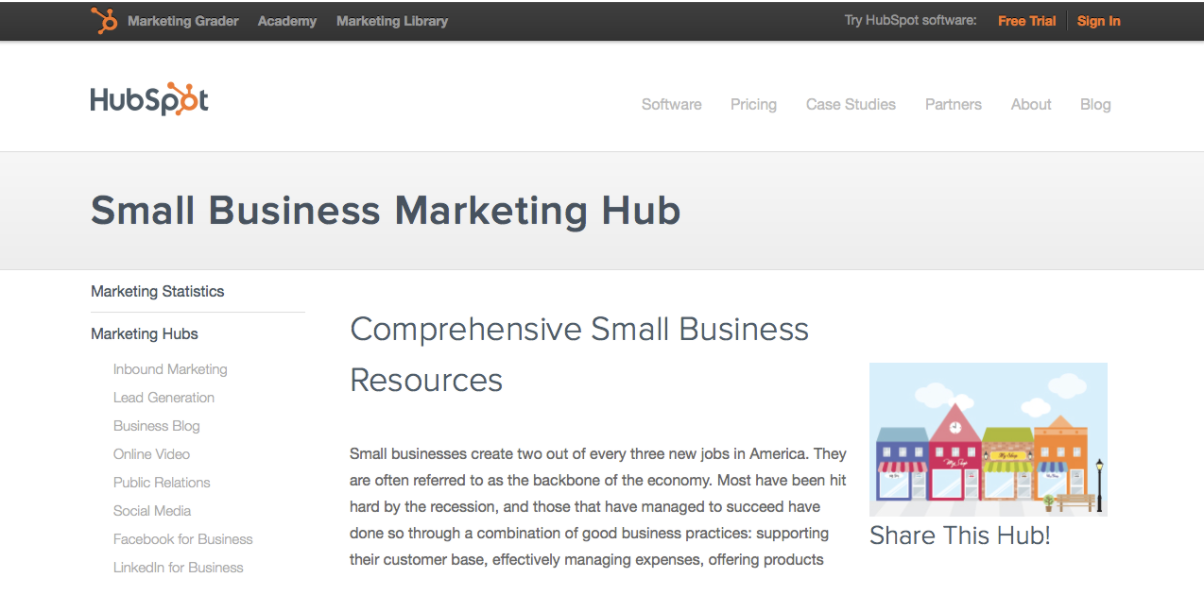
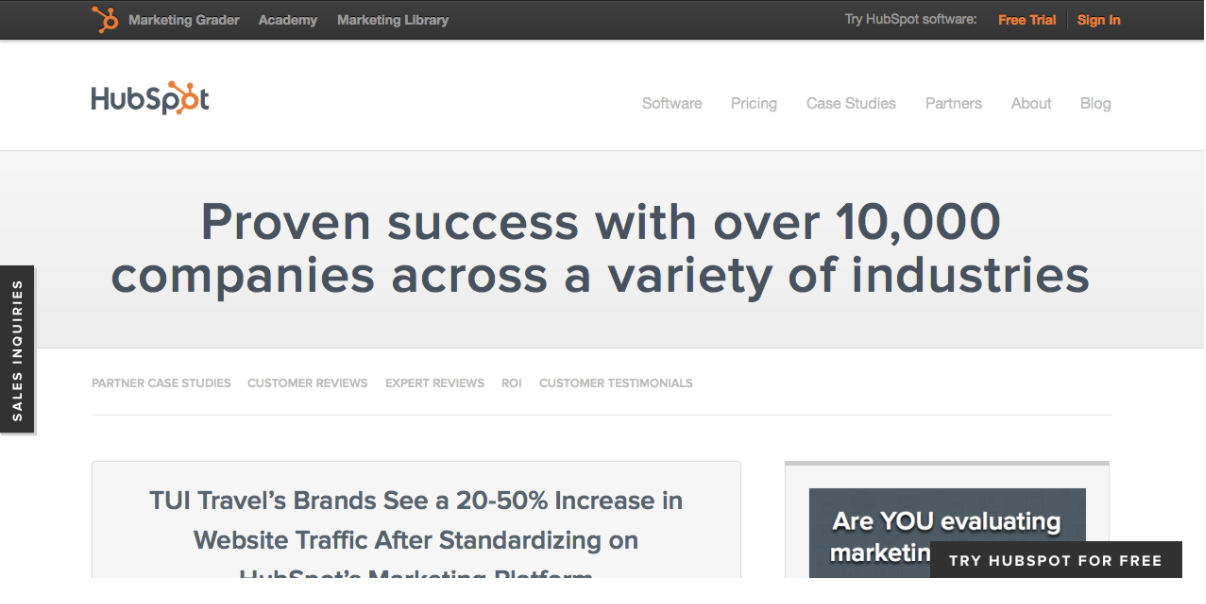
The first is clearly targeted at small business owners and marketers, while the second page is centered around larger enterprise brands.
HubSpot is able to deliver these different messages using a feature called “Smart Content” that changes the message based on the information the website/brand has already gathered about the user.
While brands are already using strategies like these, artificial intelligence will only make it easier to customize pages to tailor to customer interests based on even more variables.
Cross-selling
eCommerce companies like Amazon are already using machine learning like this to drive better product recommendations and increase sales through cross-selling.
I’m sure you’ve seen this block when browsing:

Amazon suggests products you would like based on the purchase you’re considering — providing the consumer a value-add, social proof, and, of course, increase average order value.
It’s been extremely effective, with independent research from McKinsey citing 35% of Amazon purchases are due to its recommendation algorithm.
Unique experiences
Landing pages and recommendations are cool, but what if you could actually serve completely different experience to readers based on their profile?
In other words, what if you could show every user something new and unique to them.
You’d be able to form a closer connection with the reader right off the bat by speaking directly to their interests, right?
You might be surprised to learn that this is already happening, but if you’re active on Facebook, you’ve probably even seen it in the form of these videos:
Although the template was designed and animated by humans, the main content of this video (along with those celebrating friendship anniversaries and more) is programmatically selected by autonomous algorithms to engage individual users.
This one template can be used literally billions of times every day, but is still unique every single time it’s seen.
Companies like Narrative Science are taking this even further by developing artificially intelligent writers that can create multiple versions of the same story targeted to different audiences.
Here’s a sample they produced that covered a baseball game all the way back in 2011.
Notice the embellished language in the piece that was shown to fans of the team versus the more neutral language for general readers. It was completely machine written:
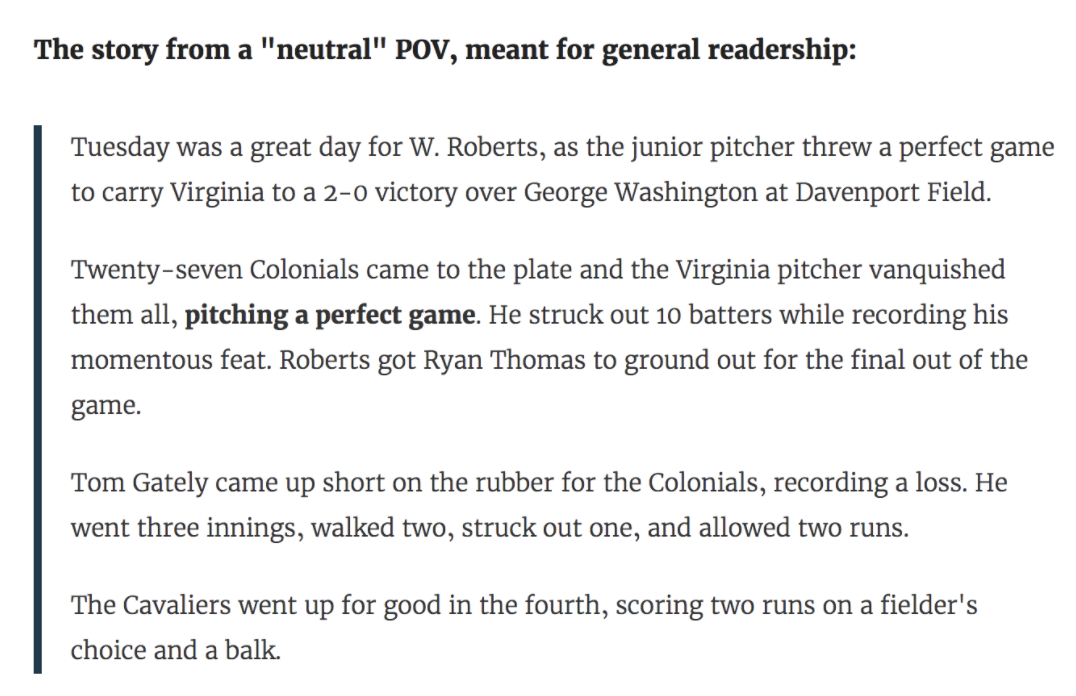
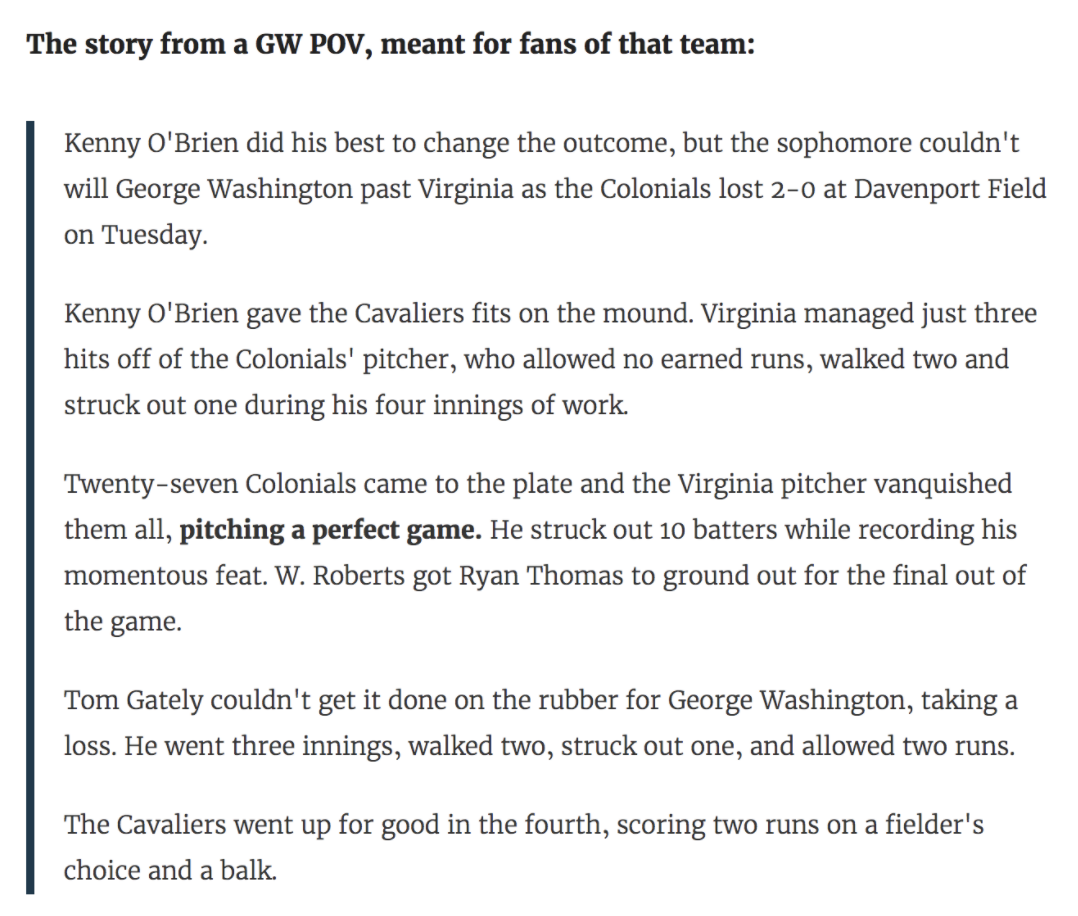
Pretty cool, huh?
As impressive as it is, this technology is still primarily used for sports and financial reporting for two main reasons:
- There is tons of similar content out there to train this algorithm because they are fairly routine and standardized.
- It’s easier to feed the system numbers and outcomes and let it spin a story.
But it still serves to show you that you can leverage computers to spin content with multiple angles for different audiences if you feed it the proper data.
Obviously, this part of the technology will be well-developed long before AI is composing content from scratch, but the idea of these two aspects combined is almost scary.
You’ll need to keep a human editor on staff for a while, but computers will probably be doing the heavy lifting sooner than you might expect.
A new age of content
The future of SEO might not be as far off as you think. Artificial intelligence is driving a new age of hyper-personalized content based on detailed data about your audience that previously wasn’t possible.
Marketers who continue to rely on old-fashioned hacks and tricks while following SEO best practices blindly will find themselves left in the dust as these algorithms get better at matching individuals to the content they want. However, if you keep pace with technology and find ways to incorporate these innovations to create better content and strategy, you’ll reap the benefits of a new age of content marketing, more powerful than ever before.
If you’re a marketer looking to improve your link game, check out our ultimate guide to link building. You can also check out our 1 Million Backlinks Analysis Series, featuring companies like Lyft, Dollar Shave Club, Airbnb.


Order Your Copy of Marcus Sheridan's New Book — Endless Customers!

